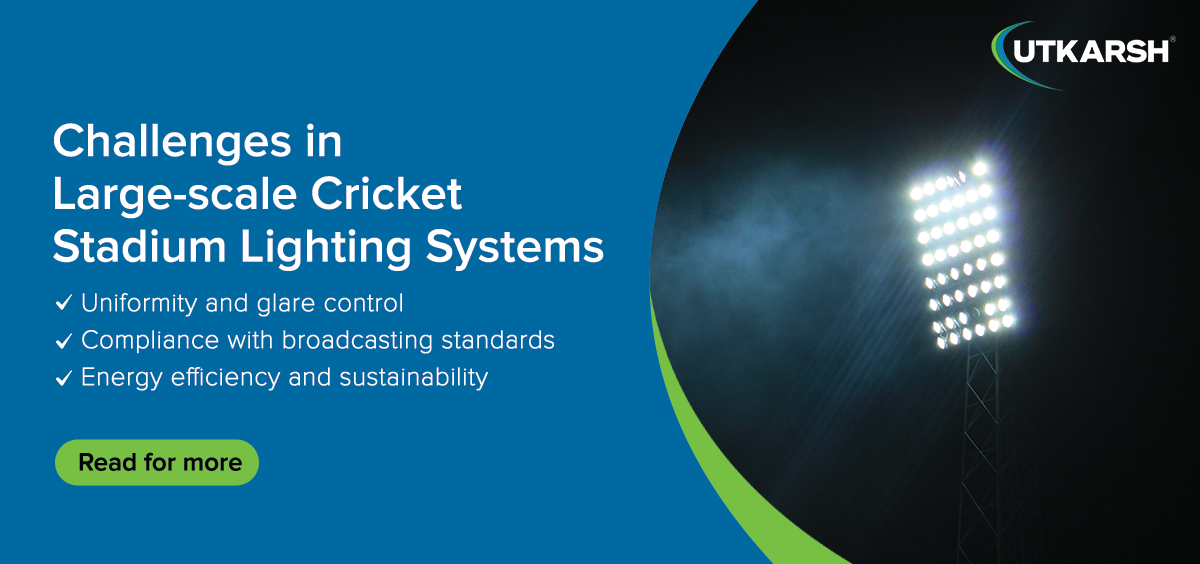Challenges in large-scale cricket stadium lighting systems

Designing and installing stadium lighting systems is a complex task as it requires striking a delicate balance between various factors. The lighting system must provide ample illumination for both the playing field and spectator stands, while at the same time it should minimise disruption to players. Hence, it is important to take into account several key challenges that can affect the quality and effectiveness of the lighting, such as glare, shadows, flicker, colour temperature, and energy efficiency.
1. Uniformity and Glare Control:
The main objective of stadium lighting is to ensure even and consistent lighting across the entire stadium. It should help both players and spectators to have a clear view of the action on the field. Simultaneously, it is important to minimise glare, as excessive glare can adversely affect a player's vision and impact their performance. To achieve this balance, it is important to optimise the height of the lighting poles in cricket stadiums, while considering both glare reduction and uniform light distribution.
2. Compliance with Broadcasting Standards:
Cricket matches that take place in large stadiums are often televised, which means that the lighting system needs to meet certain broadcasting standards. To ensure a high-quality viewing experience for cricket fans, it is essential to maintain consistent lighting quality throughout the stadium - which includes both the playing field and the spectator stands. This requires careful planning and execution to achieve the desired level of consistency.
3. Energy Efficiency and Sustainability:
Illuminating a large stadium requires a substantial amount of energy, which can lead to concerns about energy efficiency. To address this issue, stadium authorities must cautiously regulate the lighting intensity to ensure that energy is used efficiently. In recent times, many modern stadiums have started implementing sustainable practices to minimise the environmental impact associated with increased energy consumption for lighting.
4. Lighting control for day-night matches:
Cricket matches often commence during the day and extend into the evening or nighttime. In such scenarios, the stadium lighting system must seamlessly transition from daylight to darkness. Precise control is imperative to maintain consistent lighting levels on the field and in the stands throughout the entire match, regardless of the time of day.
Looking for information on high-quality stadium lighting systems?
Explore our stadium and sports lighting poles. We offer exceptional stadium mast solutions tailored for sports lighting needs, featuring fixed-type head frames and platforms designed for the installation of light fittings directed towards the playing field. These masts are equipped with a motorised manrider option, facilitating easy access to the platform for maintenance of the light fixtures. Also, options include a fixed ladder for convenient access to the upper platform. The product's design spans heights ranging from 10 to 60 metres, accommodating the installation of 50 to 60 sports luminaries.
Conclusion
Designing a stadium lighting system requires careful planning to balance brightness, comfort, and energy use. Every detail — from glare control to smooth day-night transitions — helps create the right environment for players and spectators. With Utkarsh India’s durable and efficient stadium lighting poles and masts, maintaining consistent and high-quality lighting for every match becomes simple and reliable.